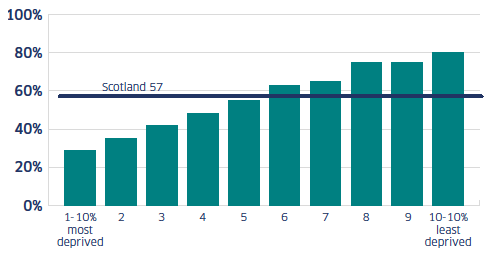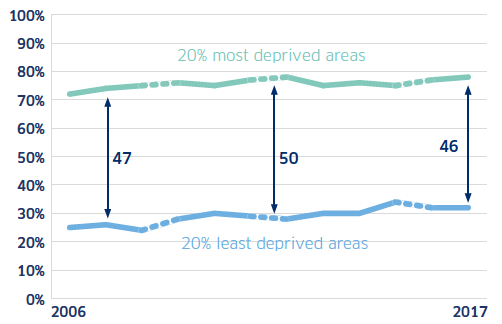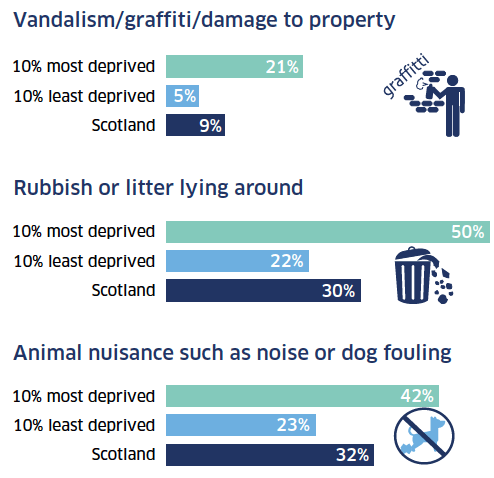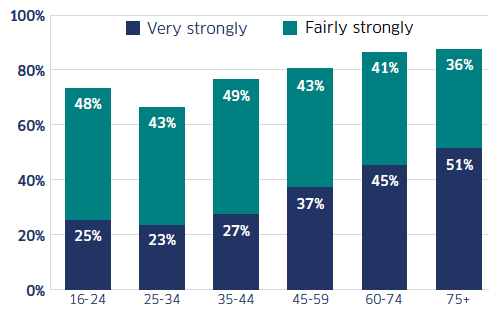Scottish household survey 2017: key findings
This short report summarises the key findings from the Scottish Household Survey 2017.
Neighbourhoods
Rating of neighbourhoods
Ratings of neighbourhoods have been consistently high with over nine in ten adults viewing their neighbourhood as a very or fairly good place to live since 1999.
Nearly all (95%) adults rate their area as (very or fairly) good place to live.
In 2017 majority of adults (57%) rated their neighbourhood as a very good place to live.
But this rating varies by area deprivation
However, this rating increases as area deprivation decreases. Only 29% of adults in the 10% most deprived areas rate it as very good place to live, compared to 80% in the 10% least deprived areas. Although a further 53% of adults in the 10% most deprived area rated it as a fairly good place to live, compared to 19% of adults in the 10% least deprived area.

The gap between the 20% most and 20% least deprived areas has been similar between 2007 and 2017
Adults in less deprived areas are more likely to rate their neighbourhood as a very good place to live. This has been a consistent finding in recent years. Whilst the proportion of people living in the 20 per cent most deprived areas who rate their neighbourhood as very good has increased over the last decade, the gap between the most and least deprived areas in 2017 was broadly a similar size as in 2007 when we look at those describing their neighbourhood as very good.

Perception of neighbourhood problems
Most potential neighbourhood problems are not considered to be particularly common. The most common issue in 2017 was animal nuisance, reported as being very or fairly common by 32%.
Experience of neighbourhood problems
Although 43% of all adults reported that they did not experience any neighbourhood problems in 2017, the proportion has decreased in recent years. Those living in the 20% most deprived areas were most likely to experience neighbourhood problems.

Community engagement
Almost eight in ten (78%) adults had a strong sense of belonging to their neighbourhood in 2017 but this varied by age, ethnicity and deprivation.

Contact
Email: Emma McCallum
There is a problem
Thanks for your feedback